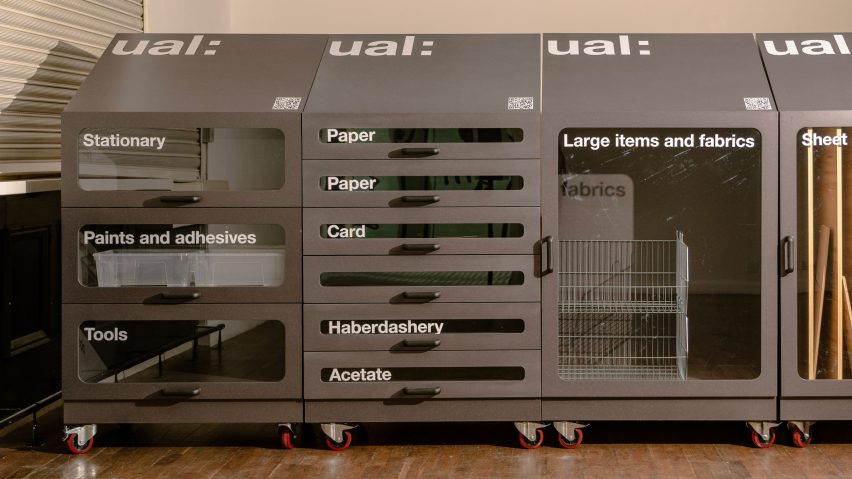A team of current and former students from the University of the Arts London have collaborated to create mobile storage units, allowing classmates to deposit and collect materials as part of a "circular economy of sharing".
The Re-Use units, which are being rolled out across UAL's London College of Fashion, Chelsea College of Arts and London College of Communication, provide a dedicated space where students can drop off unwanted scraps from their projects so that others can reuse them at no extra cost.
Currently, around 1,000 tonnes of material go to waste at the university every year, which amounts to nearly 40 bin lorries and 23 tonnes of carbon dioxide emissions.
The hope is that the reuse scheme will allow UAL to cut down on this footprint while creating an affordable, accessible material bank for students – especially in the face of the current cost-of-living crisis.
"By providing our students with the tools to share unwanted or excess materials with each other, we are helping students to source materials at no cost whilst also reducing our carbon emissions," UAL's head of sustainability Ian Lane told Dezeen.
"I believe that our new Re-Use units will help to build a circular economy of sharing amongst our community, thus changing the way that we work together as an institution."
The units were originally conceived by student interns, who were brought in to work with the university's sustainability team in 2019, and form part of UAL's wider Climate Action Plan with the aim of reaching net-zero emissions by 2040.
As there wasn't enough space on of the three campuses to turn an entire room into a material reuse station, the team decided to design bespoke donation boxes in collaboration with former student Luca Beckerson, who now works as a retail design project manager.
The final design consists of adaptable storage units made from medium-density fibreboard (MDF), sized to work for wheelchair users and held together completely without glue.
"This was so at the end of their life, the units can be dismantled and the components cleaned up and reused by students in their projects," Lane explained.
Currently, there are four different versions of the Re-Use units, purpose-built to hold different materials including hard and flexible sheet materials, stationery, paints, adhesives and tools as well as miscellaneous bulky materials.
"Vision panels were introduced so that materials are visible to students in passing," Lane explained.
"There is also an element of adaptability to the design, particularly for the cupboard format. The unit is designed to have a variety of inserts that can be fixed inside it for specific products to give tailored uses in certain areas."
This allows the set-ups to be tailored to a wide variety of UAL courses, which span everything from textile and fashion design to products and furniture.
To ensure the units don't block key circulation routes or exhibition spaces needed for temporary student shows, casters were added to the design to ensure mobility.
The slanted roof acts much like a piece of hostile architecture to prevent students from dumping materials on top, which would hinder the units' manoeuvrability.
"We're very proud of the units and think they will be a big success," Lane said. "But we need the buy-in from our students to ensure they are actually used and become part of their university life."
"My hope is students who would have previously discarded excess materials will now think twice and realise there are more sustainable options available to them."
Conscious of their own role in the climate crisis, many design students have already started making use of reclaimed waste materials in their projects.
Most recently, graduates have made plates from discarded oyster shells and potato peels, turned cow bones into minimalist sockets and used fabric offcuts from the fashion industry to form DIY lifejackets for those affected by rising sea levels.
The photography is by Orlando Callegaro.

